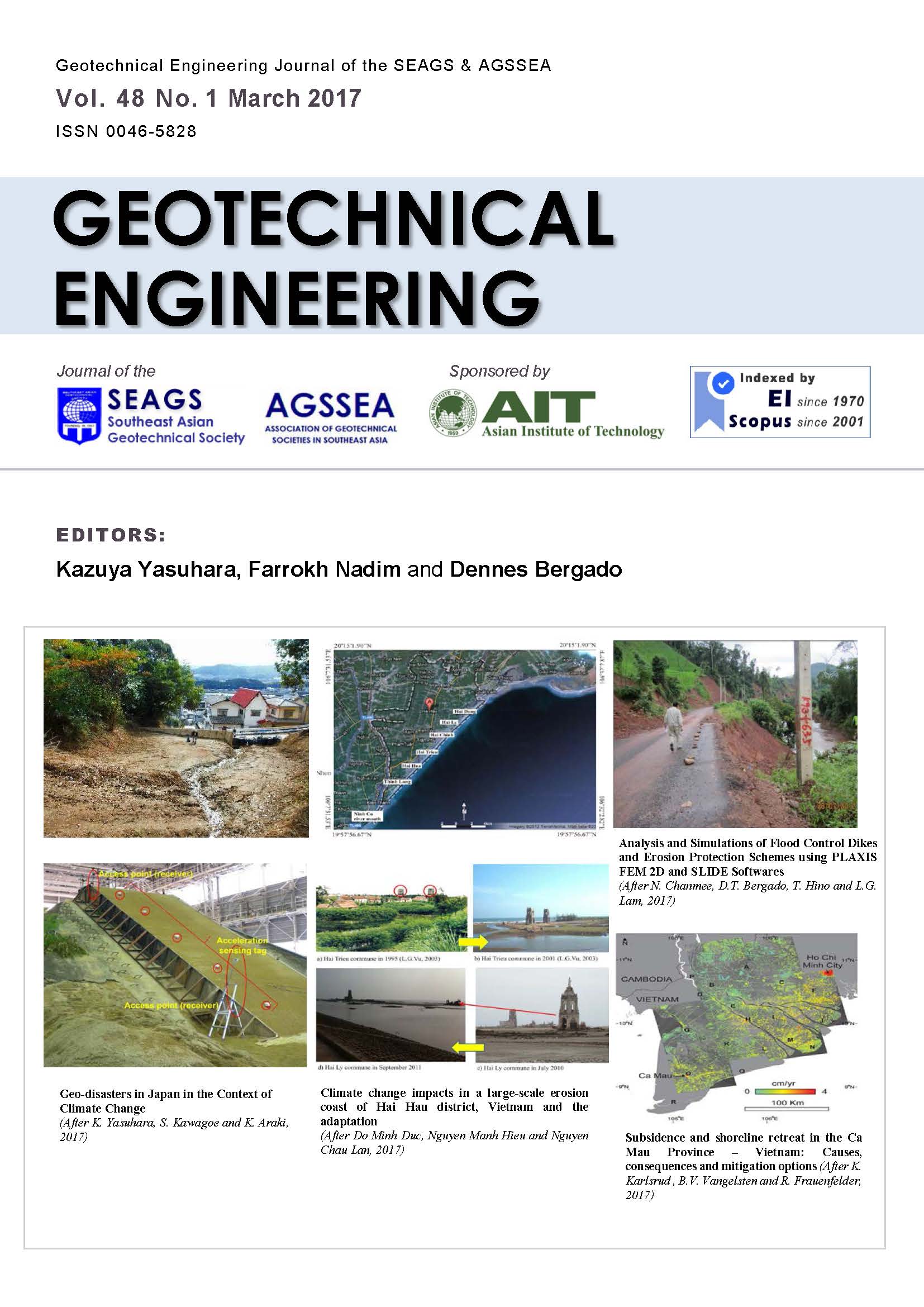Climate change impacts in a large-scale erosion coast of Hai Hau district, Vietnam and the adaptation
Main Article Content
Abstract
Among the effects of global warming, sea level rise (SLR) and severe typhoons pose the greatest threat to the stability of human settlements along coastlines. Therefore, countermeasures must be developed to mitigate the influences of strong typhoons and persistent SLR for coastal protection. This study assesses climate change impacts on coastal erosion, especially in two projected SLR scenarios of RCP2.6 and RCP8.5. The results show that SLR and severe typhoons lead to the increase of coastal erosion, beach lowering and scour. Moreover, as in projected SLR scenarios, average waves in high tide can cause severe soil erosion at inner slopes and lead to dyke failure by 2060. SLR also increases pore water pressure and causes larger wave attacks on the seadykes making them more unstable in typhoons and storm surges. The paper highlights the need for additional geotechnical engineering measures to protect the coast of Hai Hau district against SLR and severe typhoons. Among the alternatives available for countering these threats, applying soil stabilization and soil improvement combined with geosynthetics are promising strategies for coastal structures. Hybrid structures can be used with earth reinforcement and soil improvement. Additionally, the paper emphasizes the importance of multiple protective adaptations, including geosynthetics and ecological engineering measures against climate change-induced severe erosion on the coast of Hai Hau district.
Article Details

This work is licensed under a Creative Commons Attribution-NonCommercial-NoDerivatives 4.0 International License.
Copyright © 2019 Association of Geotechnical Societies in Southeast Asia (AGSSEA) - Southeast Asian Geotechnical Society (SEAGS).


